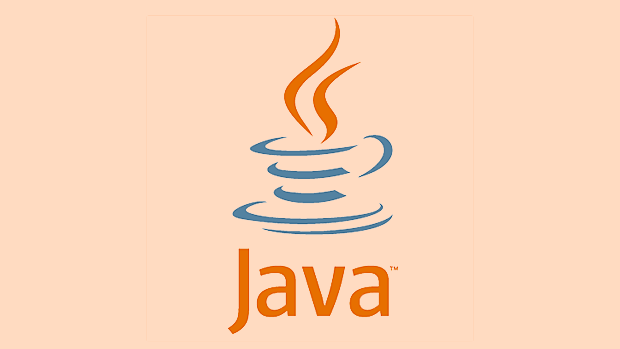The Strategy design pattern in Java allows defining a family of algorithms, encapsulating each one, and making them interchangeable to change behavior at runtime. 1. Define a strategy interface that declares the method(s) all strategies must implement. 2. Implement concrete strategies that provide specific behavior. 3. Create a context class that uses a strategy reference to delegate work. 4. Use the pattern in your application by dynamically setting strategies at runtime, promoting flexibility and maintainability while avoiding conditional logic.

Implementing the Strategy design pattern in Java is a clean way to define a family of algorithms, encapsulate each one, and make them interchangeable. It lets you change behavior at runtime without modifying the class that uses those behaviors. This is especially useful when you want to avoid messy conditional logic (like long if-else chains) and promote code reuse.

What Is the Strategy Pattern?
The Strategy pattern involves three main components:
- Context – the class that uses a strategy.
- Strategy Interface – defines the contract for all supported algorithms.
- Concrete Strategies – implementations of the strategy interface.
This separation allows you to plug in different behaviors dynamically.

Step-by-Step Implementation
Let’s walk through how to implement this with a simple example: payment methods.
1. Define the Strategy Interface
Start by creating an interface that declares the method(s) your strategies will implement.

public interface PaymentStrategy {
void pay(int amount);
}This sets the contract: any class implementing PaymentStrategy must provide a pay() method.
2. Implement Concrete Strategies
Now create classes that implement this interface. Each represents a different payment method.
public class CreditCardPayment implements PaymentStrategy {
@Override
public void pay(int amount) {
System.out.println("Paid " amount " using Credit Card");
}
}
public class PayPalPayment implements PaymentStrategy {
@Override
public void pay(int amount) {
System.out.println("Paid " amount " via PayPal");
}
}These are two concrete strategies. You can add more later without affecting existing code.
3. Create the Context Class
The context holds a reference to a strategy and delegates work to it.
public class ShoppingCart {
private PaymentStrategy paymentStrategy;
public void setPaymentStrategy(PaymentStrategy paymentStrategy) {
this.paymentStrategy = paymentStrategy;
}
public void checkout(int totalAmount) {
if (paymentStrategy == null) {
throw new IllegalStateException("No payment strategy set");
}
paymentStrategy.pay(totalAmount);
}
}This class doesn't care which payment method is used — it just calls the strategy's pay() method.
4. Use It in Your Application
Finally, wire everything together in your main application.
public class MainApp {
public static void main(String[] args) {
ShoppingCart cart = new ShoppingCart();
// Choose strategy at runtime
cart.setPaymentStrategy(new CreditCardPayment());
cart.checkout(150);
cart.setPaymentStrategy(new PayPalPayment());
cart.checkout(200);
}
}You can switch strategies on the fly, making your system flexible and easy to extend.
Tips When Using Strategy Pattern
Here are some practical things to keep in mind:
- Use interfaces or abstract classes for strategy definitions — it makes switching easier.
- Avoid tight coupling between the context and concrete strategies.
- Encapsulate variations in behavior behind strategy classes — this keeps your code cleaner.
- Consider using dependency injection to pass strategies into the context.
- If strategies need access to data from the context, you can pass it explicitly through method parameters.
Also, be careful not to overuse this pattern. If your strategies are very simple or rarely change, it might be overkill.
Summary
So, implementing the Strategy pattern in Java boils down to defining an interface, creating multiple implementations, and letting a context object use them interchangeably. It helps reduce conditionals, improves maintainability, and supports open/closed principle.
That’s basically it. Not too hard once you get the structure right.
The above is the detailed content of How to implement the Strategy design pattern in Java?. For more information, please follow other related articles on the PHP Chinese website!

Hot AI Tools

Undress AI Tool
Undress images for free

Undresser.AI Undress
AI-powered app for creating realistic nude photos

AI Clothes Remover
Online AI tool for removing clothes from photos.

Clothoff.io
AI clothes remover

Video Face Swap
Swap faces in any video effortlessly with our completely free AI face swap tool!

Hot Article

Hot Tools

Notepad++7.3.1
Easy-to-use and free code editor

SublimeText3 Chinese version
Chinese version, very easy to use

Zend Studio 13.0.1
Powerful PHP integrated development environment

Dreamweaver CS6
Visual web development tools

SublimeText3 Mac version
God-level code editing software (SublimeText3)
 Asynchronous Programming Techniques in Modern Java
Jul 07, 2025 am 02:24 AM
Asynchronous Programming Techniques in Modern Java
Jul 07, 2025 am 02:24 AM
Java supports asynchronous programming including the use of CompletableFuture, responsive streams (such as ProjectReactor), and virtual threads in Java19. 1.CompletableFuture improves code readability and maintenance through chain calls, and supports task orchestration and exception handling; 2. ProjectReactor provides Mono and Flux types to implement responsive programming, with backpressure mechanism and rich operators; 3. Virtual threads reduce concurrency costs, are suitable for I/O-intensive tasks, and are lighter and easier to expand than traditional platform threads. Each method has applicable scenarios, and appropriate tools should be selected according to your needs and mixed models should be avoided to maintain simplicity
 Best Practices for Using Enums in Java
Jul 07, 2025 am 02:35 AM
Best Practices for Using Enums in Java
Jul 07, 2025 am 02:35 AM
In Java, enums are suitable for representing fixed constant sets. Best practices include: 1. Use enum to represent fixed state or options to improve type safety and readability; 2. Add properties and methods to enums to enhance flexibility, such as defining fields, constructors, helper methods, etc.; 3. Use EnumMap and EnumSet to improve performance and type safety because they are more efficient based on arrays; 4. Avoid abuse of enums, such as dynamic values, frequent changes or complex logic scenarios, which should be replaced by other methods. Correct use of enum can improve code quality and reduce errors, but you need to pay attention to its applicable boundaries.
 Understanding Java NIO and Its Advantages
Jul 08, 2025 am 02:55 AM
Understanding Java NIO and Its Advantages
Jul 08, 2025 am 02:55 AM
JavaNIO is a new IOAPI introduced by Java 1.4. 1) is aimed at buffers and channels, 2) contains Buffer, Channel and Selector core components, 3) supports non-blocking mode, and 4) handles concurrent connections more efficiently than traditional IO. Its advantages are reflected in: 1) Non-blocking IO reduces thread overhead, 2) Buffer improves data transmission efficiency, 3) Selector realizes multiplexing, and 4) Memory mapping speeds up file reading and writing. Note when using: 1) The flip/clear operation of the Buffer is easy to be confused, 2) Incomplete data needs to be processed manually without blocking, 3) Selector registration must be canceled in time, 4) NIO is not suitable for all scenarios.
 How does a HashMap work internally in Java?
Jul 15, 2025 am 03:10 AM
How does a HashMap work internally in Java?
Jul 15, 2025 am 03:10 AM
HashMap implements key-value pair storage through hash tables in Java, and its core lies in quickly positioning data locations. 1. First use the hashCode() method of the key to generate a hash value and convert it into an array index through bit operations; 2. Different objects may generate the same hash value, resulting in conflicts. At this time, the node is mounted in the form of a linked list. After JDK8, the linked list is too long (default length 8) and it will be converted to a red and black tree to improve efficiency; 3. When using a custom class as a key, the equals() and hashCode() methods must be rewritten; 4. HashMap dynamically expands capacity. When the number of elements exceeds the capacity and multiplies by the load factor (default 0.75), expand and rehash; 5. HashMap is not thread-safe, and Concu should be used in multithreaded
 Effective Use of Java Enums and Best Practices
Jul 07, 2025 am 02:43 AM
Effective Use of Java Enums and Best Practices
Jul 07, 2025 am 02:43 AM
Java enumerations not only represent constants, but can also encapsulate behavior, carry data, and implement interfaces. 1. Enumeration is a class used to define fixed instances, such as week and state, which is safer than strings or integers; 2. It can carry data and methods, such as passing values ??through constructors and providing access methods; 3. It can use switch to handle different logics, with clear structure; 4. It can implement interfaces or abstract methods to make differentiated behaviors of different enumeration values; 5. Pay attention to avoid abuse, hard-code comparison, dependence on ordinal values, and reasonably naming and serialization.
 What is a Singleton design pattern in Java?
Jul 09, 2025 am 01:32 AM
What is a Singleton design pattern in Java?
Jul 09, 2025 am 01:32 AM
Singleton design pattern in Java ensures that a class has only one instance and provides a global access point through private constructors and static methods, which is suitable for controlling access to shared resources. Implementation methods include: 1. Lazy loading, that is, the instance is created only when the first request is requested, which is suitable for situations where resource consumption is high and not necessarily required; 2. Thread-safe processing, ensuring that only one instance is created in a multi-threaded environment through synchronization methods or double check locking, and reducing performance impact; 3. Hungry loading, which directly initializes the instance during class loading, is suitable for lightweight objects or scenarios that can be initialized in advance; 4. Enumeration implementation, using Java enumeration to naturally support serialization, thread safety and prevent reflective attacks, is a recommended concise and reliable method. Different implementation methods can be selected according to specific needs
 Java Optional example
Jul 12, 2025 am 02:55 AM
Java Optional example
Jul 12, 2025 am 02:55 AM
Optional can clearly express intentions and reduce code noise for null judgments. 1. Optional.ofNullable is a common way to deal with null objects. For example, when taking values ??from maps, orElse can be used to provide default values, so that the logic is clearer and concise; 2. Use chain calls maps to achieve nested values ??to safely avoid NPE, and automatically terminate if any link is null and return the default value; 3. Filter can be used for conditional filtering, and subsequent operations will continue to be performed only if the conditions are met, otherwise it will jump directly to orElse, which is suitable for lightweight business judgment; 4. It is not recommended to overuse Optional, such as basic types or simple logic, which will increase complexity, and some scenarios will directly return to nu.
 How to fix java.io.NotSerializableException?
Jul 12, 2025 am 03:07 AM
How to fix java.io.NotSerializableException?
Jul 12, 2025 am 03:07 AM
The core workaround for encountering java.io.NotSerializableException is to ensure that all classes that need to be serialized implement the Serializable interface and check the serialization support of nested objects. 1. Add implementsSerializable to the main class; 2. Ensure that the corresponding classes of custom fields in the class also implement Serializable; 3. Use transient to mark fields that do not need to be serialized; 4. Check the non-serialized types in collections or nested objects; 5. Check which class does not implement the interface; 6. Consider replacement design for classes that cannot be modified, such as saving key data or using serializable intermediate structures; 7. Consider modifying






